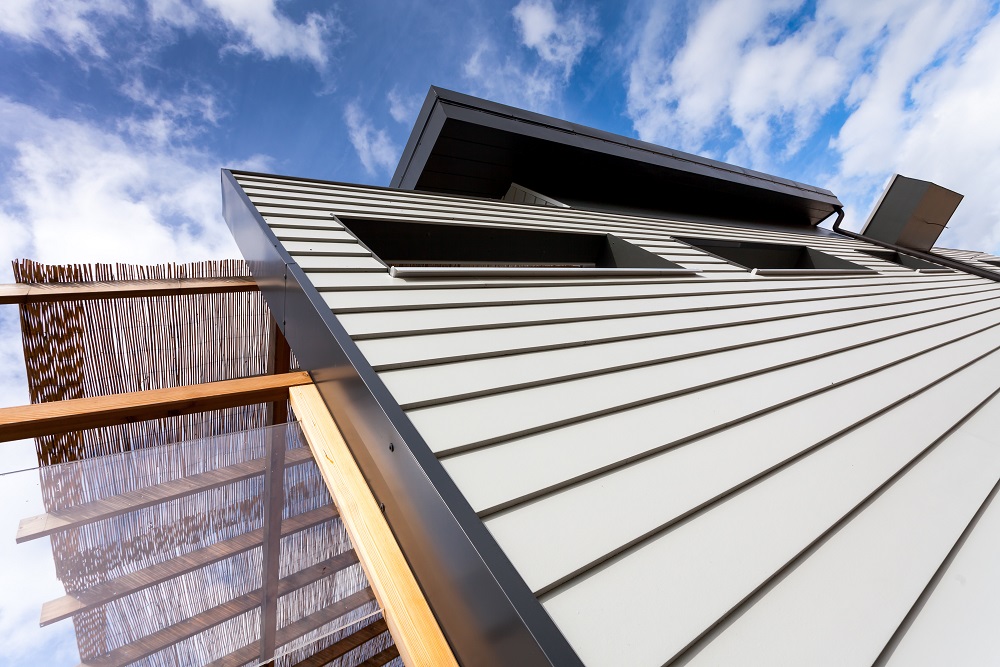James Hardie has today launched the latest in a series of planned product innovations; the HardieWindbreaker™ sheathing board.
Adam Botterill, country manager for James Hardie UK, comments: “As a world leading materials manufacturer, we believe in developing products that will give specifiers and contractors maximum design flexibility.”
“Reducing site time is a key innovation driver in the industry at present, and consequently, we have seen a sharp increase in the application of lightweight steel framing systems, together with a steady decrease in the use of blockwork. For us, offering an engineered sheathing board is a key part of our product offering to accommodate emerging market trends.”
“Both commercial and residential design styles are changing; architects want flexibility to design using mixed materials and oblique angles, and developers want a quicker, easier installation that will achieve the end result on time, to budget, and with minimal disruption to surrounding communities.”
“The use of lightweight construction with complementary sheathing boards allows for the development of lighter, more sustainable buildings that can be delivered at speed, without the need for wet trades or specialised labour that is in short supply.”
HardieWindbreaker™ sheathing boards can be used to quickly weather-proof a building during the construction phase, allowing interior trades to commence work faster and boost productivity on site. With an engineered fibre cement core encapsulated in a robust, water repellent sealer, the boards will not warp or shrink when exposed to adverse climates, and offer a guaranteed 12 months exposure during construction. The boards are lightweight, easy to cut flexible to handle and can be fixed using either screws, staples or nails.
HardieWindbreaker boards are A2 non-combustible, offering 60 minutes fire protection in compliance with current Building Regulations Approved Document B (fire safety).
Designed and tested across both the US and European research and development facilities at James Hardie, materials scientists have ensured the final product delivers superior weather tightness and enhanced performance in extra high wind zones, offering wind resistance up to 5800 UFL (approx. 350 miles per hour)*. The product comes with a 15 year manufacturers’ warranty.
*Mechanical fixing to SFS frames






